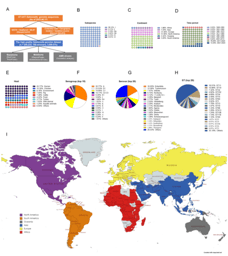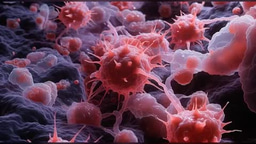Getting to the bottom of the placental microbiome
Published in Microbiology
Life is simple when you work on faeces. Its microbial biomass is very high, hence if you perform 16S/18S rRNA PCR and metagenomics you will mostly amplify and sequence DNA from real microorganisms in your samples. After a few faecal projects, you are going through the motions, generating results and may sit proudly on your stool, believing that you really know your ... subject. Placental samples, however, are fundamentally different in regards to microbial abundance as they are (nearly) devoid of microorganisms. As a result, if you use the same approach to the analysis of your placental samples as you’ve previously successfully been using for your faecal research, you could find yourself up microbome creek without a paddle.
In faecal research contamination has comparatively little effect on your results. But in samples with a low microbial biomass, like placenta, it may be the only thing you’ll be able to detect. If you are not aware of this fact you’ll be amazed by the wide variety of microorganisms that are to be found in the placenta. You will be surprised by the presence of Vibrio cholerae, more than a hundred years after the last documented cholera outbreak in the UK, until you realise your colleages are using the same pipelines to sequence their collections. You will be astonished when you discover using metagenomics that all placenta have exactly the same strain of Escherichia coli. But, perhaps after finding Deinococcus geothermalis, you will have a “the clue is in the name” revelation and realize that many of the signals are ecologically impossible and that almost all are following artificial patterns as detailed in our recent publication: Recognizing the reagent microbiome (https://www.nature.com/articles/s41564-018-0202-y).
In samples with low microbial biomass, the emphasis should be on repeatedly testing your findings to determine whether they are real. Real signals should be reproducibly detectable if you try to measure them with different but highly sensitive methods. On top of this, you need a very large number of samples and proper annotation of your metadata and processing steps (lot numbers for everything) to find all of the artificial patterns. In the placenta, almost all signals are not reproducibly detectable as most are a result of reagent/machine/lab contamination issues (DNA isolation, amplification, sequencing, other sources) or can be shown to be due to contamination during delivery or sample collection.
As a result, in combination with all of the controls we had done, we might have concluded that it is ALL contamination but we would have been throwing out the baby with the geiser water. Others, like us, have shown that the placenta does not have anything resembling a microbiome but our current work shows that Streptococcus agalactiae, which is a major cause of neonatal sepsis, can be found in about 5% of all placental samples prior to the onset of labour. For readers not interested in this particular field, we think the paper still provides a useful example of being skeptical and critical about what we think we see. In the words of Richard Feynman, “the first principle is that you must not fool yourself—and you are the easiest person to fool... after you’ve not fooled yourself, it’s easy not to fool other scientists”.
Follow the Topic
-
Nature

A weekly international journal publishing the finest peer-reviewed research in all fields of science and technology on the basis of its originality, importance, interdisciplinary interest, timeliness, accessibility, elegance and surprising conclusions.



Please sign in or register for FREE
If you are a registered user on Research Communities by Springer Nature, please sign in